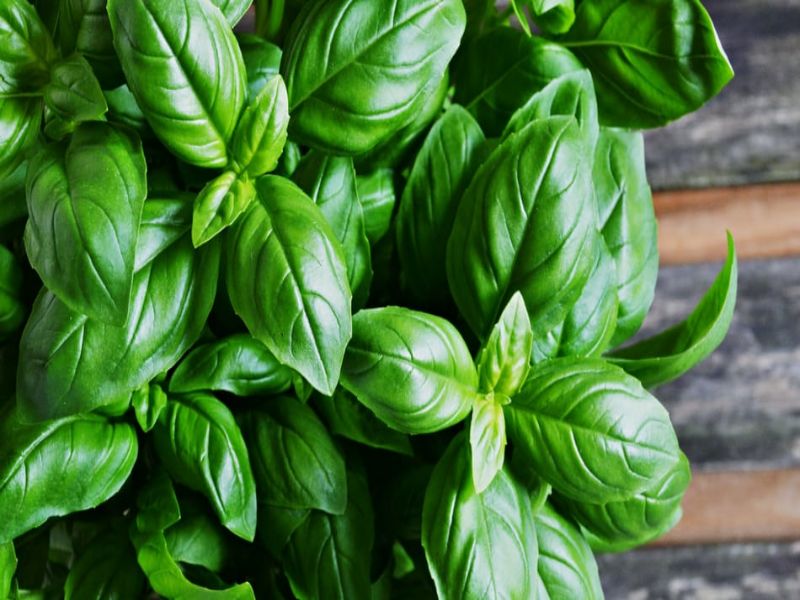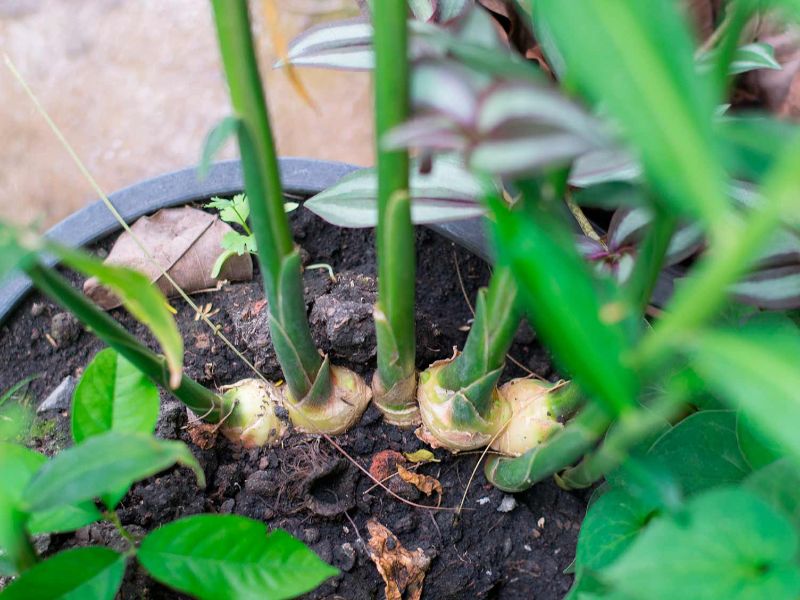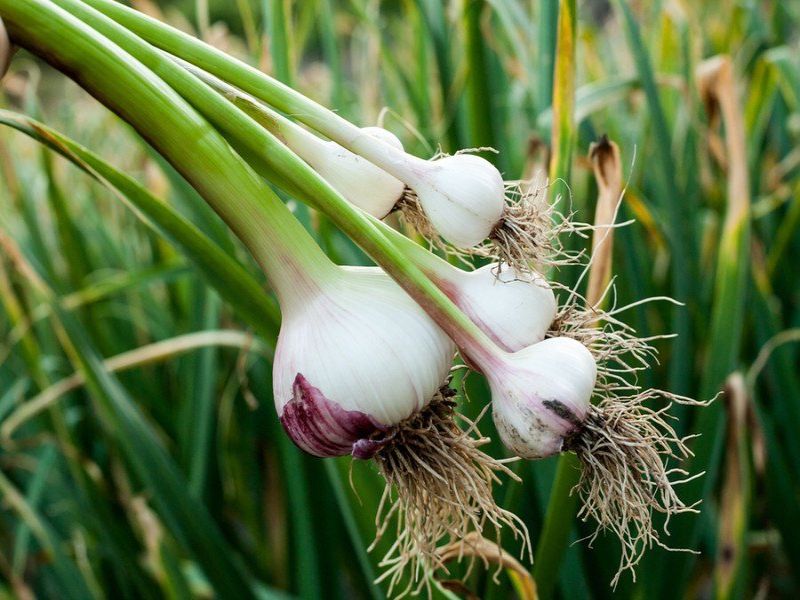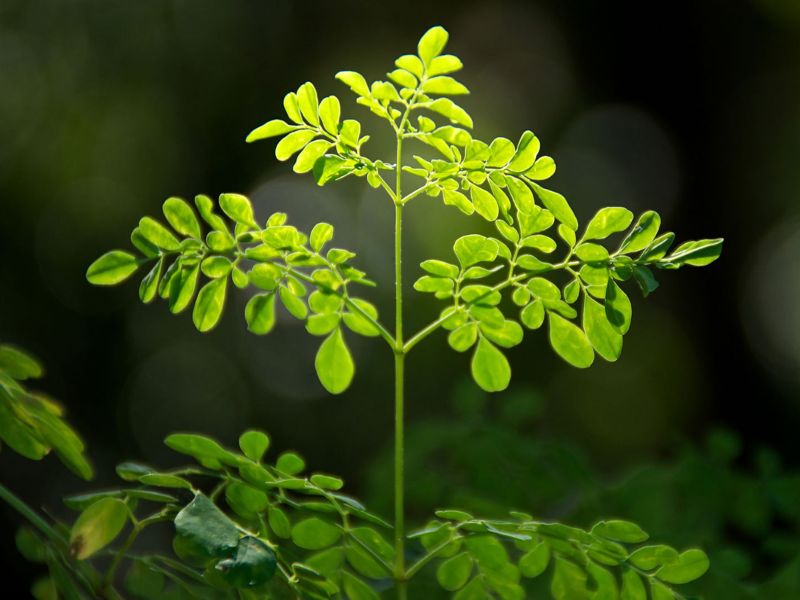Rosemary

Botanical Name :Eosmarinus Officinalis
Rosemary is a woody and fragrant evergreen herb with fine needle-like leaves and warm-bitter taste. It’s a member of the mint family, which is used mostly for seasoning in Italian dishes. Rosemary is rich in iron and calcium, and its aroma can benefit people with memory issues. The extracts of its leaves and twigs have many medicinal and culinary uses.
- Improves blood circulation
- Fight the damage of free radicals
- Stimulates memory power
- Eases indigestion
Side effects include vomiting, coma, and pulmonary edema
Common Names: Rusmari, Rosmarin, Rosmariini, Ramerino, Romero, Erromero, Rozmarinë, Ružmarin and Dendrolivano
Aloe Vera

Botanical Name: Aloe barbadensis
Aloe vera is an evergreen succulent with almost no to a little stem. Originated from the Arabian Peninsula, this plant grows worldwide in the tropical climates. The plant is famous among modern gardeners as it can grow indoors as well as outdoors, successfully. Many industries have been using the plant in their products such as beverages, lotions, ointments, to name a few.
- Powerful antioxidant
- Reduces oral plague
- Often treats constipation
- Prevents Wrinkles
- Relieves Sunburn
Common Names: Cape aloe, Aloe curacao, Barbadoes aloe, Venezuela aloe, Indian alces, Ghirita, Lu hui, Star Cactus
Turmeric

Botanical Name: Curcuma longa
Turmeric is a spice that belongs to the ginger family and has bioactive compounds. Due to these compounds, the herb is an antiseptic with numerous other health benefits. It has a unique earthy taste with a heady aroma and is usually bright orange.
- Contains strong antioxidant properties
- Lowers the risk of brain diseases
- Helps in heart diseases
- Reduces the risk of cancer
- Balance hormone levels
- Boosts your immune system
- Prevents hair loss
Turmeric is potentially safe to use by anyone. Research more about the spice if you have any doubts about its safety.
Common Names: Haldi, Halodhi, Arishina, Halud, Haridra, Yaingang, Indian saffron, ukon, nghe, wong-keong
Lemon Grass

Botanical Name: Cymbopogon
Lemongrass is a perennial grass of the grass family, a culinary herb in Asian cuisines and medicinal herb in India. People cultivate the herb because of its lemon-like aroma and therapeutic properties. It grows well in the summer season with a red base stem and a height of up to ten feet. The grass genus is a common ingredient in many deodorants, soaps, tea, and cosmetics.
- Great for aromatherapy
- Detoxifies the body
- Helps with sleeping disorders
- Cures fever
- Prevents rheumatism
- Cleanses the skin
- Protects body cells
It’s unsafe to take lemongrass by mouth when you’re breastfeeding or pregnant.
Common Names: Andropogon citratus, Andropogon flexuosus, Ceylon Citronella Grass, Citronnelle de Ceylan, Citronnelle de Java, Citronnelle de Madagascar, Cymbopogon nardis, Fever Grass, Herbe Citron, Hierba de Limón, Jonc Odorant, Verveine Indienne
Ashwagandha

Botanical Name: Withania Somnifera
Withania Somifera is a plant in the nightshade family with flowers in a bell shape and dull green leaves. U.S markets sell Ashwagandha as dietary supplements, and it’s commonly used in Ayurveda for its medicinal benefits. However, there is no specific evidence which can prove any of the benefits.
- Has anti-cancer properties
- Acts positively on stress and anxiety
- Increases sexual drive
- Maintains thyroid health
- Rejuvenates body health
- Increases fertility in men
Large doses can cause abdominal discomfort, diarrhea and even miscarriage in pregnant women.
Common Names: Ajagandha, Asana, Asgandha, Ashagandha, Asoda, Asundha, Avarada, Ayurvedic Ginseng, Ginseng Indien, Hayahvaya, Indian Ginseng, Kanaje Hindi, Kuthmithi, Peyette, Physalis somnifera, Turangi-Ghanda, Vajigandha, Winter Cherry and Withania somnifera
Lavender

Botanical Name: Lavandula angustifolia
Lavender belongs to the mint family with many culinary uses and also makes a great landscape decoration for your yard. The plant is unusual in appearance with finely-toothed leaves and small flowers with purple bracts. Contrary to this fact, not all lavenders look purple. Some hybrid species have other attractive pastel hues like pale pink, white, yellow, violet blue, and rose. It can last for several years if given the right attention.
- Combats fungal infection
- Effective for hair loss
- Reduces stress, anxiety, and depression
- Eliminates insomnia
- Enhances brain function
- Benefits mental health
Lavender, sometimes can cause constipation, headache, and irritation.
Common Names: Lavanda, levănțică, Lavandīna, Lavendin, Levanduľa, Laventeli, Lavandula , Levanta , Lavânta çiçeği, and Lavendel
Peppermint

Botanical Name: Mentha × piperita
Crossing watermint with spearmint produces the famous plant from the mint family- Peppermint. In the modern era, peppermint is favorite to flavor soft drinks, ice creams, toothpaste, and many other products. Here are some medicinal properties that it holds:
- Eases stomach disorders
- Reduces stress
- Fights bad breath
- Betters the immune system
- Relaxes muscle pain
Using peppermint in normal food amounts is possibly safe. Avoid using commercial peppermint products that are coated with enteric to prevent anal burns.
Common Names: Black Peppermint, Brandy Mint, Field Mint, Herba Menthae, Lamb Mint, Mint Balm, Paparaminta, Western Peppermint
Thyme

Botanical Name: Thymus vulgaris
Thyme is among the most popular herbs from the mint family. It has been used to treat a range of symptoms along with multiple dietary uses. Also, this ornamental herb has antibacterial and insecticidal properties. Commercially, the herb is available in the forms of essential oils and tea.
- Can Treat Arthritis
- Potent for stomach ache, diarrhea, and sore throat
- Lowers blood pressure
- Cures a cough
- Boosts immunity
Thyme is safe to use by adults as well as children if taken in normal food amounts.
Common Names: Common thyme, English thyme, garden thyme
Basil

Botanical Name: Ocimum basilicum
Basil is a herb popular as a food seasoning to promote health benefits. It’s an adaptogen herb with anti-inflammatory and antioxidant properties. From slowing the aging process to building a stronger immunity, health benefits of basil are quite a lot:
- Good for digestive ailments
- Effective anti-inflammatory
- Cleanses the skin
- Fights depression
- Aids Diabetic patients
- Supports a healthy gut
- Combats bacteria
The medicinal plant is safe to use by most people. However, you should only take the leaves for a short term.
Common Names: Albahaca, Basilic, Basilic Commun, Basilic Grand, Basilic Grand Vert, Basilic Romain, Basilic aux Sauces, Basilici Herba, Basilici Herba, Common Basil, Garden Basil, Krishna Tulsi, Munjariki, Ocimum basilicum, St. Josephwort, Surasa, Sweet Basil, Vanatulasi, Varvara, Visva Tulsi
Ginger

Botanical Name: Zingiber officinale
Ginger is one of the most delicious and healthiest spices available on Earth. Not only it adds a tasty flavor to the food, it’s full of nutrients and bioactive compounds that are beneficial for your brain and body. Ginger mostly grows in warmer areas of Asia and is popular to cure an upset stomach. Some other benefits include:
- Treats motion sickness
- Cures chronic indigestion
- Helps in menstrual pain
- Lowers blood cholesterol
- May protect against Alzheimer
- Fights Infections
Excessive intake of ginger might increase bleeding tendency and promote diarrhea. Throat irritation, abdominal discomfort, central nervous system depression are some other downfalls of ginger. However, you must not worry about these side effects if you’re intaking it in the prescribed dose.
Common Names: Jiang, gingembre, ingwer, adrak, kon-gang, adi
Cayenne Pepper

Botanical Name: Capsicum annuum ‘acuminatum’
Cayenne pepper is a type of capsicum annum and is usually used to add a chilly flavor to dishes. This pepper has been a part of Native American dishes and medicine since year unknown. The ingredient capsaicin is held responsible for the various health benefits of this hot chili. Here are several benefits of cayenne pepper:
- Enhances blood circulation
- Aids bad throat
- Relieves a headache
- Clears nasal congestion
- Promotes weight loss
- Boosts metabolism
- Improves Psoriasis
Cayenne peppers are safe to eat when in a limit, excessive intake can upset your stomac
Common Names: Capsicum frutescens, guinea pepper, african bird pepper,
Garlic

Botanical Name: Allium Sativum
Allium sativum, commonly called garlic is a species of the Allium family and is a common food ingredient all around the world. It has a unique flavor, which makes it an indispensable element in many dishes. Ancient Greek physicians have referred it to be the father of western medicines. Not just it eases people with heart and blood issues, it has several other health benefits too.
- Combats sickness
- Prevents Alzheimer
- Increases life-span
- Improves athletic performance
- Ends hair loss
- Clears skin impurities
Before taking garlic, do enough research on the web for its interactions with various drugs present in popular medicines.
Common Names: Ajo, Alho, Allii Sativi Bulbus, Allium, Allium sativum, Da Suan, Echte Rokkenbolle, Echter Knoblauch, Lasun, Maneul, Ninniku, Rason, Rocambole, Rockenbolle, Rust Treacle, Schlangenknoblauch, Stinking Rose, Suan, Thoum, Vitlok
Spinach

Botanical Name: Spinacia oleracea
Spinach is one among the most favored edible flowering plant, native to central and western Asia. The leaves of the plant are worldwide famous as a vegetable. The leaves are an excellent source of Vitamin K, A, and C. When you cook and eat spinach, your body absorbs a higher content of protein, fiber, thiamin, and zinc.
- Increases energy in your body
- Manages diabetes
- Lowers high blood pressure
- Promotes eye health
- Maintains healthy bones
- Relaxes your body
In the worst case of spinach complication, a person may experience mild diarrhea, allergic reactions, or even kidney stones if taken regularly in big quantities.
Common Names: palak, épinard , spinat , spinace , espinaca , and hispan
Marigold

Botanical Name: Tagetes
Marigold is a subdivision of perennial plant in the sunflower family. It’s usually yellow, orange, red, and maroon in appearance and belongs to the kingdom- Plantae. There are many more benefits of marigold except its bright beauty:
- Boosts Immune System
- Alleviates skin diseases
- Aids menstrual pain
- Treat mouth ulcers
- Provides relief from joint pain
- Cures fungal infections
- Reduce eye infection and conjunctivitis
- Repels bugs and mosquitoes
Marigold can sometimes result in an allergic reaction in forms of rash, itchiness, trouble breathing, and dizziness. Seek medical attention if you notice any of the above or other effects.
Common Names: Caltha, Ganda, Gols bloom, Garden Marigold, Gold bloom, Holligold, Marybud, Pot Marigold
Calotropis Gigantea

Botanical Name: Calotropis procera
Crown flower has a bunch of waxy white or lavender flowers, which makes them an excellent choice for floral arrangements. Growing crown flower in your yard isn’t difficult as long as you put them near an area with full sun. It holds a strong position when it comes to Ayurvedic treatments for various ailments:
- Cures digestive disorders
- Helps relieve a toothache
- May help with snakebites
- On an inhalation, cures a cough
Calotropis in unsafe to use especially in high doses, it can lead to heart problems.
Common Names: Giant Milkweed, Crown Flower, Giant Calotrope, Swallow-wort
Indian lilac

Botanical Name: Azadirachta indica
Neem or Indian lilac is a tall evergreen plant cultivated for its timber, resin, and aromatic seed oil. Though it’s an evergreen plant, it may shed all its leaf in extreme drought conditions. Apart from using it for medicinal purposes, it can also serve as an insecticide to eliminate insects from your indoors. It’s most famous in the Indian subcontinent for its beneficial traits in healing:
- Prevents acne, pimples, wounds, and ulcers
- Has antifungal and antibacterial properties
- Stimulates the kidney and liver
- Minimize the danger of malaria
- Can treat a cough
- Reduces swelling and inflammation
Neem consumption is not for infants and those with existing kidney or liver issues.
Common Names: Neem, Margosa, Nim, Nimba, Persian Lilac, Pride of China and Indian Lilac
Moringa

Botanical Name: Drumstick Tree
Moringa is a drought tolerant plant, which is widely cultivated for its medicinal leaves, flower, pods, and stems. It’s grown in the tropical parts of the world, especially Himalayan regions of India, Pakistan, Bangladesh, and Afghanistan. While all the parts of the plant are healthy, the leaves are the most nutritional part. Moringa is a nutritious vegetable, which can solve problems like:
- Fights free radicals
- Maintains hormonal balance
- Reduces inflammation
- Rejuvenates skin
- Protects your cardiovascular system
- Stimulates wound healing
It’s not safe to use the roots and barks of the tree, especially if you’re pregnant or breastfeeding.
Common Names: Windibundu, Kpashima, Kotba, Zingeridende, Nasadua, Gawara, Sejana Sanjina, Soanjana, Lal Sahinjano, Sigru Shobhanjan, Sobhan jana, Shobanjana, Danshamula, Swanjera, Murungai, Murunkak-kai, Morunga, Maranga calalu, Mulaga, Sajana, Morunga, Morungai, Sundan


